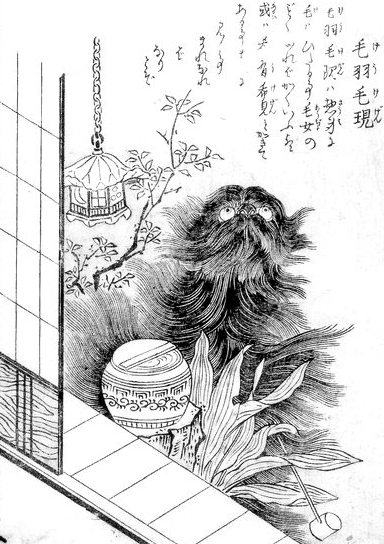Before I start on the character creations I need to decide what Japanese folklore I want to base the characters on. While researching Japanese animal folklore I realised that there were a lot of creatures so I listed some that I found interesting:
Tsuchigumo

Tsuchigumo (土蜘蛛), literally translated “dirt/earth spider”, is a historical Japanese derogatory term for renegade local clans, and also the name for a race of spider-like yōkai in Japanese folklore.
Tanuki
The Japanese racoon dog, also known as tanuki(狸 or たぬき, [taꜜnɯki]) in Japanese, is a subspecies of the Asian racoon dog. In folklore, the tanuki takes a different approach with supernatural powers. The tanuki, in folklore, are said to be able to shapeshift into other animals, objects or people, or even control humans
Bakeneko

Bakeneko has sometimes been translated as ‘Monster Cat’ or ‘Ghost Cat’, but the best definition in English may simply be ‘Changing Cat.’ The mythological Bakeneko are yōkai (supernatural creatures) that allegedly begin as regular domestic cats. Legends say that as cats get older they change. The process starts with them walking on their hind legs, although with time the cats gain more powers and grow larger (even to the size of a human), they then have the ability to change their forms and sometimes peak human languages.
Qilin
:max_bytes(150000):strip_icc()/QilinBeijingAhenobarbusFlickr-56a042053df78cafdaa0b5dd.jpg)
The qilin ([tɕʰǐ.lǐn]; Chinese: 麒麟), or kirin in Japanese, is a mythicalhooved chimerical creature known in Chinese and other East Asian cultures, said to appear with the imminent arrival or passing of a sage or illustrious ruler.[1] Qilin is a specific type of the lin mythological family of one-horned beasts.
Mizuchi

The Mizuchi 蛟 is a type of Japanese dragon or legendary serpent-like creature, either found in aquatic habitat or otherwise connected to water.
Nure Onna

In Japanese folklore, a nure-onna(濡女, “wet woman”) is a yōkai which resembles a reptilious creature with the head of a woman and the body of a snake. While the description of her appearance varies slightly from story to story, she has been described as being 300 m in length and has snake-like eyes, long claws, fangs and long, beautiful hair. She is typically spotted on a shore, washing her hair.
Keukegen

It resembles a small dog covered entirely in long hair. Its name is a pun – when written with different kanji (希有怪訝), keukegenmeans “an unusual thing which is rarely seen”.
According to one report, the keukegen is a disease spirit which lives in damp, dark places and causes people in the house to get sick.
Komainu

Komainu (狛犬), often called lion-dogs in English, are statue pairs of lion-like creatures either guarding the entrance or the inner shrineof many Japanese Shinto shrines or kept inside the inner shrine itself, where they are not visible to the public.
For a full list of Japanese folklore creatures visit: https://en.wikipedia.org/wiki/List_of_legendary_creatures_from_Japan
I also found illustrations of a number of different Yokai’s :


